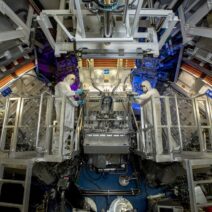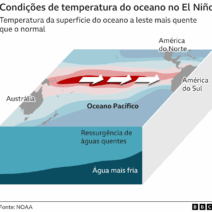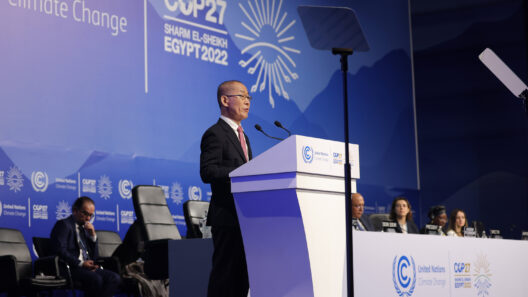From clear azure skies to suffocating smog, the transformation of our atmosphere is both subtle and alarming. This shift is not just a figment of our imagination; it represents a deeply interconnected relationship between rising temperatures and atmospheric pollution. As temperatures ascend, the very air we breathe undergoes a notable metamorphosis, blurring the boundary between pristine landscapes and industrial decay.
The genesis of this phenomenon can be traced back to the relentless march of industrialization. Factories belch forth clouds of particulates, while vehicles contribute their own noxious cocktails to the atmosphere. As global temperatures increase due to anthropogenic climate change, a crescendo of heat begins to orchestrate a veritable symphony of smog.
Heat serves as a catalyst for numerous chemical reactions, particularly those involving volatile organic compounds (VOCs) and nitrogen oxides (NOx). When these pollutants interact under the scourge of sunlight, they give rise to ground-level ozone. Standing as an unseen adversary, ozone can exacerbate respiratory ailments and diminish overall air quality. Its formation is akin to a double-edged sword; while stratospheric ozone protects us from harmful UV radiation, tropospheric ozone engulfs us in a haze that obscures our vision and endangers our health.
Furthermore, the increase in ambient temperatures leads to heightened evaporation rates from lakes and rivers, amplifying humidity levels. This process not only affects weather patterns but also plays a significant role in the proliferation of harmful algal blooms (HABs). These blooms can release toxins that further contaminate our air and water supply, contributing to the visible haze that has blurred the once-clarity of our atmosphere.
Additionally, the striking correlation between heat waves and deteriorating air quality beckons global attention. During periods of extreme heat, the demand for energy spikes as air conditioning units struggle to combat the rising temperatures. This spike in energy consumption is often met by fossil fuel power plants, which emit additional pollutants into the atmosphere. It’s a cyclical curse: heat drives energy demand, and the energy produced further pollutes the already-cumbersomely warm air.
Picture a boiling pot of water; as heat increases, so does the agitation of the molecules within. Similarly, as the earth’s temperature rises, the atmosphere becomes increasingly volatile. In urban areas, the phenomenon of the “urban heat island” exemplifies this; cities, with their copious concrete and asphalt, absorb and retain heat, creating localized zones of increased humidity and decreased air quality. The interplay of these elements manifests a tangible layer of haze—an aesthetic forfeiture of clarity that should serve as a wakeup call for society.
On a global scale, the interaction of climatic variables and air quality reaches alarming proportions. The World Health Organization (WHO) has projected that by 2050, air pollution could be responsible for an additional 7 million premature deaths annually. This is not merely a statistic; it encapsulates the human cost of neglecting the unseen connections between heat and haze. As temperatures escalate, vulnerable populations—particularly children and the elderly—bear the brunt of this invisible affliction.
The link between climate change and public health is further strengthened by the rising frequency of wildfires. In a warming world, dry conditions prevail, and forests become more susceptible to combustion. Idyllic landscapes are transformed into harrowing formations of smoke and haze. The particulate matter released during these conflagrations travels great distances, adversely impacting air quality far from the source of the fire. The haze, thus, is not merely a local phenomenon but a consequence of global warming, echoing warnings across vast expanses.
Moreover, the economic implications of poor air quality are alarming. Healthcare costs associated with respiratory diseases surged as air pollution intensified, creating a burden on public health systems. In turn, the economic productivity of a region can plummet due to increased absenteeism and a workforce hindered by respiratory afflictions. Thus, the unseen connection between heat and haze extends beyond environmental degradation; it encroaches upon economic stability and public health.
The solutions to this dilemma, while formidable, are not insurmountable. Transitioning towards renewable energy sources is paramount in mitigating emissions that contribute to air pollution. Solar, wind, and hydropower can replace fossil fuels, thus addressing both energy demands and air quality concerns. Moreover, promoting urban green spaces can enhance climate resilience, as trees serve as natural air purifiers, absorbing pollutants and producing oxygen.
Education—and subsequent action—represents another linchpin in the endeavor to ameliorate air quality. A populace informed about the intricate connections between climate change, health, and the environment is more likely to advocate for sustainable practices and policies. Changes at the individual, community, and national levels can aggregate into significant strides toward restoring the atmosphere’s clarity.
As we continue to navigate the complexities of our evolving climate, it is essential to recognize the profound ties between our actions and their consequences. The transition from clear skies to a thick haze is a sobering reminder of the urgent need for collective action against global warming. Recognizing the unseen connections between heat and haze is the first step toward a clearer, cleaner future. The air we breathe is not merely a commodity; it is a vital component of our existence, deserving of our utmost care and consideration.







